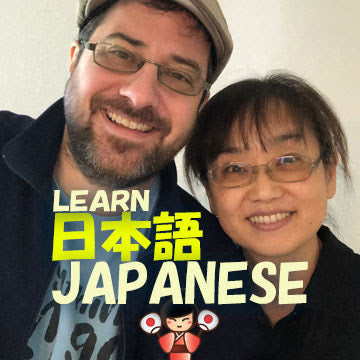Did you know we produce two podcasts every single week? And both are FREE?! (Of course, Makoto+ members get bonus content) Today, we will thoroughly examine a sentence from the latest episode of Nihongo no Tane. While the podcast is best for upper beginners and above, if you are a beginner, I would encourage you to carefully study the sentence breakdown below.
Today, I want to share with you a few lines from this week's episode of Yumi's podcast, Nihongo no Tane. While this podcast is best for intermediates, we'll use it today as a lesson for beginners and upper beginners.
But first, if you aren't a Makoto+ member, you are missing out on bonus content for both of our weekly podcasts as well as tons of exclusive Makoto+ content. It's cheap too! (Not in quality, but in price) Click here to give Makoto+ a try for free.
The Phrase Breakdown:
First, let’s look at the vocabulary and then we'll go look at the sentence structure.
- アメリカ - America; United States
- の - limiting particle [limits the "inside" to that within "America"]
- 中(なか) - inside; within; among
- では - particle used for topic or subject of discussion; it is a combination of "で" (at; in) and "は" (topic marker)
- 最(もっと)も - most; extremely
- 古(ふる)い - old
- 町(まち) - town
- です - is; be (copula)
Now, let's walk through the sentence structure together. If you are a beginner, don't worry, we'll explain everything.
Let's tackle the first part (before the comma). I won't add furigana. Try to read the (naked) kanji. If you can't remember the reading, just scroll up.
アメリカの中では
Literally, this means “America's middle at as for...”
You could also say, 「アメリカでは」 and it would mean basically the same thing but adding 「の中」 has a feel of "throughout America" rather than simply "in America."
There are three particles in this short phrase. Let's look at each:
- の - this is most often used to show the possessive. However, here, it has a limiting function: not just the middle (中) of anything, but the "middle of America". In cases like this, it is best to translate the の phrase from the end to the beginning: 中 (middle) の (of) アメリカ (America). Therefore, アメリカの中 means "the middle of America."
- で - this shows location or context; at; in; within
- は - this is the overall topic particle
Together, アメリカの中では would mean "as for within America" or simply, "within America."
When figuring out the meaning of a Japanese sentence, my advice is to first tackle the topic は particle phrase (the above アメリカの中では) and then move on to the rest of the sentence.
Let's do that.
最も古い町です
Literally, this means “most | old | town | is.”
The word "最も" is an adverb that is used to denote the superlative degree of an adjective or adverb, in this case, it is used with "古い" (old) to mean "oldest."
The copula "です" is a formal way to equate the subject with the complement of the sentence. Here, it can be roughly equivalent to "is" or "are" in English. Its usage indicates politeness in speech.
Now, try putting it all together. Without scrolling above, how would you translate the following?
If anything confuses you, just leave a comment below.
This new episode is live right now. Makoto+ members, click here for your bonus materials.
About Nihongo no Tane
By the way, if you want to see the past twenty episodes, click here for that (free for all).
Want to go through them all (over 130!) and all with bonus content? Makoto+ members, click here to see ALL past episodes plus exclusive bonus content.
It's for upper beginners to intermediates who want to practice listening.
Listen to Yumi talk about... whatever she wants to talk about.
Practice your listening comprehension with natural Japanese on various topics such as Japanese culture, fun idioms, and, of course, cats. The episodes can be enjoyed in any order.
See the website for key vocabulary from the podcast and a quiz to test your comprehension for free.
Makoto+ members also get Japanese transcripts and English translations and sometimes Anki flashcard decks.
It's a four-minute weekly lesson on Japanese culture and language.
And it's free.
It's free, but (yes, you know the drill) Makoto+ members get super bonuses.
Nihongo no Tane Japanese Immersion Podcast
- FREE for all - Podcast - Subscribe with your favorite podcast player (iTunes, Amazon music, Spotify, Google, and more) or check our website weekly.
- FREE for all - Video - Each week, we also release a video of the podcast with the information displayed on the screen. Subscribe to our YouTube channel for the latest episodes.
- FREE for all - Quiz - After you listen to the podcast, take the quiz to test your understanding.
- Makoto+ Bonus - Printable PDF with Japanese transcription and English translation of the podcast
- Makoto+ Bonus - Sound files - Download the episode
If you a Makoto+ member (all levels) and an upper beginner, have you taken advantage of the already huge and growing library of all 134 episodes? If not, click here to get started.
If you aren't a Makoto+ member, why not join today and gain instant access to PDFs, shadowing exercises, and hundreds of sound files from the past 134 episodes.
Click Here to Learn About Makoto!
If you have any questions, please let me know.






